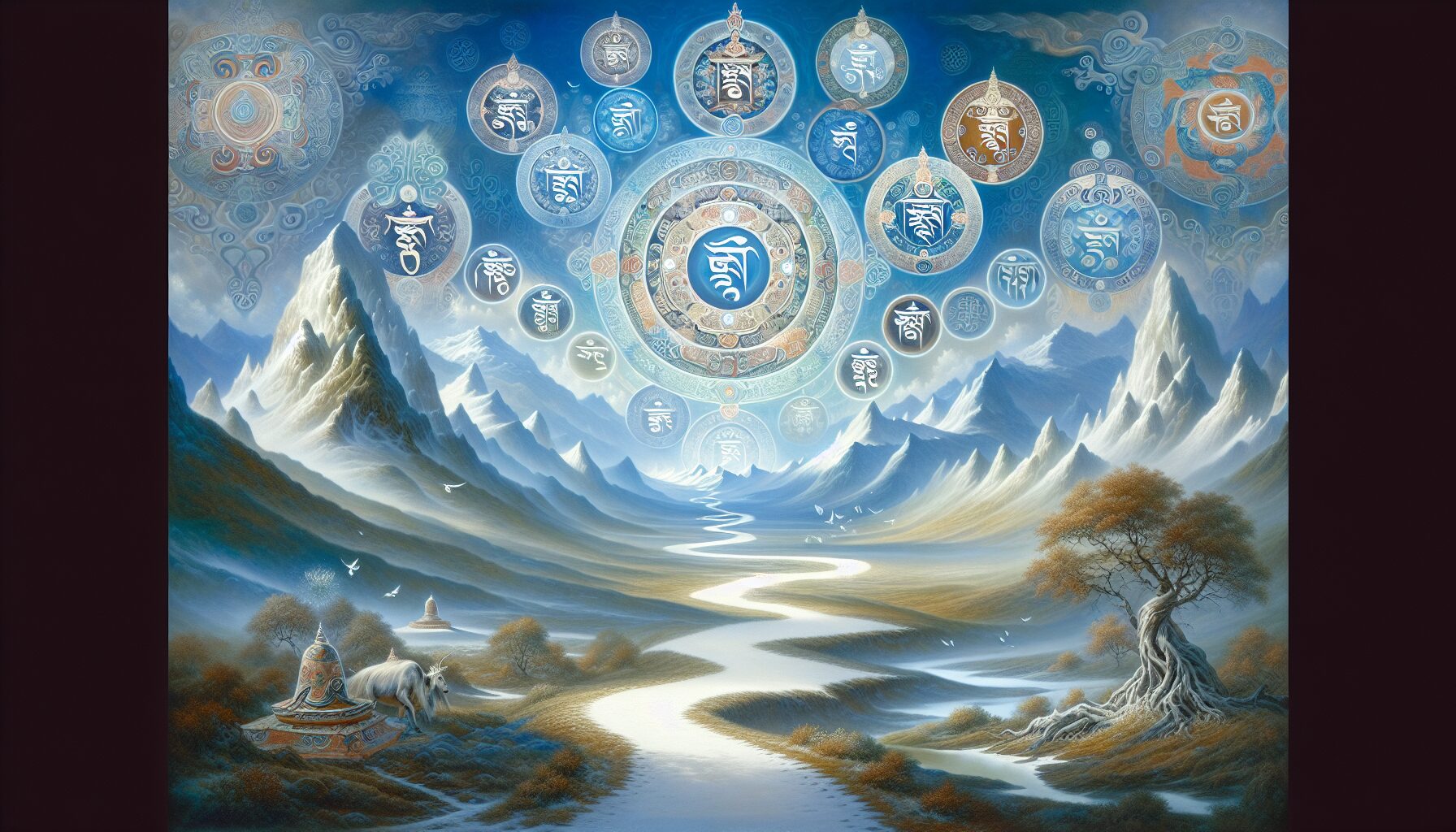The Tibetan Book of the Dead, also known as Bardo Thodol, serves as a sacred text of Tibetan Buddhism, offering spiritual insight and guidance for the living and the dead as they navigate the transitional states of existence. This revered scripture is a profound compilation of esoteric teachings meant to aid the soul’s journey through the intermediate state known as the Bardo, bridging life, death, and rebirth.
Understanding the Bardo
The term “Bardo” translates to “intermediate state” or “in-between state,” descriptive of any transition between two states of being. While the most well-known application of this term pertains to the transition between death and rebirth, it can also refer to various transitions in life including moments of deep meditation or even the waking and sleeping states.
The Bardo Thodol identifies three main Bardos, or states, directly related to dying and rebirth:
- Chikhai Bardo: The Bardo of the moment of death.
- Chonyid Bardo: The Bardo of the experiencing of reality, often associated with the after-death state.
- Sipai Bardo: The Bardo of becoming, leading to rebirth.
The Origin of the Text
The origins of the Tibetan Book of the Dead are traced back to the teachings of Padmasambhava, a sage credited with the spread of Buddhism in Tibet during the eighth century. The text is reputed to have been discovered by Karma Lingpa in the 14th century and functioned as both an instructor for guiding the deceased through the Bardos and a scriptural source for the living to understand life’s ephemeral nature.
Teaching and Practice
“Now, when the Bardo of dying dawns upon me, I will abandon clinging to this life, enter the nature of the great perfection, and attain the supreme body of light.” – The Tibetan Book of the Dead
The core message of the Tibetan Book of the Dead emphasizes non-attachment and the recognition of the nature of the mind. Upon death, the text instructs the soul to recognize the true nature of reality and let go of fear, thus achieving liberation. This vital teaching becomes a guide not only for the deceased but also serves as a meditative framework for practitioners throughout their lives.
For practitioners, understanding these teachings involves rigorous study and practice under the guidance of qualified teachers. It encourages preparation for the moment of death through meditation and mindfulness, thereby facilitating a more conscious transition and enhancing one’s spiritual awareness.
The Cultural Impact
The Tibetan Book of the Dead has had significant cultural and spiritual impacts beyond the confines of Tibetan Buddhism. Its teachings have permeated into Western spirituality and psychology as well, with pioneering figures such as Carl Jung acknowledging the value of its insights in understanding the human mind and the process of individuation.
In contemporary times, the text’s influence extends to modern literature and media, with interpretations and adaptations cited by authors across the globe. Notably, the American writer, Timothy Leary, along with Richard Alpert (later known as Ram Dass), explored these themes in their work The Psychedelic Experience, connecting the mystical experiences detailed in the Tibetan Book of the Dead with modern psychedelic consciousness.
Legacy and Reflection
As a spiritual masterpiece, the Tibetan Book of the Dead continues to be a significant resource for those seeking to understand and prepare for death. Its quintessential lessons about the impermanence of life and the importance of living with awareness resonate deeply with human existential quests across cultures.
This enduring guide through the mysteries of life and death remains a beacon of wisdom, inviting readers to explore not only the afterlife but the essence of living well. Its teachings remind us of the pivotal role of compassion, mindfulness, and spiritual awakening as tools to transcend our earthly fears and attachments.
In the words of Carl Jung, “The world in which we live is full of mysteries, and none more enigmatic than that of our own existence.” It is this enigma that the Tibetan Book of the Dead embraces—guiding individuals toward understanding and liberation.
